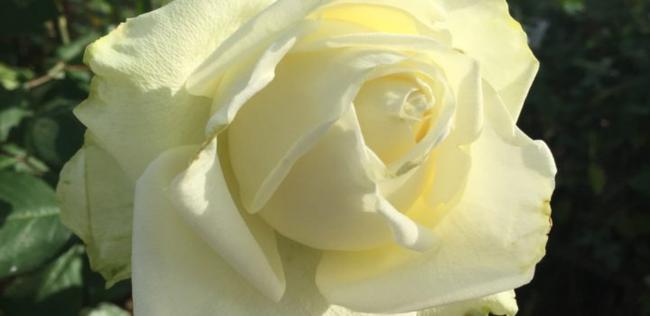PRODUCTION CHAIN TO EXPLORE FOR A SUSTAINABLE AND MULTIFUNCTIONAL FLORICULTURE

"To invest in the cooperation to:
1. To introduce cultivar for flower or cut branches (selections of Acacia dealbata, rosemary, elicrisum, lavender, ancient roses, peony.
2. To realize a ""zero residues"" production (anticipating the incoming EU standards) at the end of the production cycle.
3. To take advantage of the multi-functionality (eg extractive uses) of at least one of the aforementioned varietal selections, for an additional exploitation and compatible with the ornamental one and exploit the plants for a longer period, compared to the normal commercial window.
4. To qualify, technically support and promote the productions introduced, evaluating the possibility of introduction of a quality label."
The innovation promoted by the GO is aimed at achieving specific business results, through the development of research results, the realization of new ideas, the testing and adaptation of existing techniques / practices. The project intends to stimulate the start of a production chain for the horticultural sector able to make the most of the multi-purpose of ornamental species. Therefore, it intends to introduce innovative ornamental products in the market (eg new products; zero residues; essential oli extraction).
The production of ornamental plants must comply with a series of rules: REG CE 315/68 (quality standards for flower bulbs, tubers and rhizomes - G.U. L. 71 of 21/03/1968); REG 316/68 (quality standards for fresh cut flowers and foliage - G.U. L 71 of 21/03/1968). Also several Sector Plans are buited to regulate and stimulate the growt of this sector (eg Medicinal and aromatic crops, National Plan of the Floriculture Sector), as the same as Regional, National and Interregional projects (eg ""Piante Intelligenti"", MiPAAFT, FLORE3.0, Interreg Alcotra) Sector plans and experimentation projects have been developed to stimulate quality of productions, their competitiveness and their penetration on the markets.
This intense work, however, is not enough to meet the needs of a commercial company, nor can give a complete answer to the diversification of the horticultural sector. Particularly, the present development direction is in the diversification / identification of new horticultural products, in the diversification / multifunctionality of the uses of the plant products (eg Extractive uses), and, finally, in the identification of products that can ""lengthen"" the season of use of the horticultural products.
In fact, companies are asking, starting from existing productions, to develop some ornamental characteristics, or to identify other uses, or to identify new species or varieties starting from the biodiversity of the territory.
"DESCRIPTION
The innovation consists in the introduction of new or innovative selections for flower or cut foliage:
to. introduction of selections of Acacia dealbata.
b. introduction of new selections of rosemary, helichrysum and lavender for cutted foliage;
c. introduction of innovative Peonia products;
d. introduction of antique roses for perfume.
PRODUCTS
a. Acacia dealbata. This species is characterized by a very interesting flowering, but, unfortunately, often outside the most important period of sale of this flowering frond (Women's Day). The innovative product will be the use of this frond - as well as a flower product - also, outside the flowering period, as an extractive base for aromas to be used in perfumery and cosmetics. The result will be greater sustainability of cultivation (multi-functionality of the crop).
b. Rosemary, helichrysum and lavender for green (cutted) foliage. Some selections of rosemary and helichrysum have characteristics that can be used as cutted foliage;
c. Peony. Some arboreal peony selections can be used as a pot species. The project product is the development of specific cultivation protocols, in order to favor the insertion in this growing market;
d. introduction of antique roses for perfume. The specific product concerns the use of antique roses as an extract for aromas-base for perfumes. The pedoclimatic suitability that historically distinguishes the Ligurian west cast for the production of roses can be appropriately exploited by the project and favor its inclusion in this economically interesting market.
ACTIVITIES
Product development activities will be made by partners CeRSAA and CREA-OF tegether with farmers partners. The research centres will engage human and material resources (plants, substrates, ...), while the companies will commit land parcels (min. 250 m2 - max 500 m2) and their own activities of surveillance and crop care, up to the collection of products of project. The CeRSAA and CREA-OF will collect all vegetational and production data, process it and present it to the partnership in the form of a vademecum / technical report."
"DESCRIPTION
2. To develop good production practices aimed at the production of ""zero residues"" production (anticipating the upcoming EU standards), applying protocols in such a way that, at the end of the production cycle, the final product has a residual content of zero (minimum environmental impact), or compatible with organic farming protocols.
With the EC Regulation 78/2018 the Annexes II and III of the Reg EC 396/2005 concerning the Maximum Allowed Residues (mg / Kg) on the different agricultural crops have been updated. Specifically, specific RMA values were introduced for:
- edible flowers, classified, among fresh herbs, with basil;
- flowers for infusion preparations (chamomile, hibiscus, rose, jasmine, etc.);
Starting from 2015, the European Parliament has also expressed its wish for the introduction of specific legislation on pesticide residues on flowers and fronds for ornamental use. DG Sanco and COPA-COGECA (Working group of minor uses) have been asked to produce the first data on the subject.
Presumably, residual values of plant protection products authorized for the ornamental sector will be identified, equal to the maximum residue values identified for fruit and vegetable crops.
Being able, therefore, to anticipate the times and collaborate with agricultural enterprises in order to contain the use of pesticides in floriculture, trying to reach a ""zero residue"" appears important for the competitiveness and survival of the sector.
PRODUCTS
The product of innovation will be a manual of good practices dedicated to the management of plant protection products, with a view to reducing the number of treatments and the number of products distributed. The manual will contain the result of the agronomic and chemical investigations carried out on the crops, in relation to their use (ornamental, extractive).
EXECUTION METHODS
The CeRSAA partner, with the collaboration of farmers partners, will carry out a verification of the disease control protocols currently in use and will take care of the execution of residue analysis applying the operational standards of the Test Centers (for which the CeRSAA is accredited)."
"DESCRIPTION
3. Exploit the potential multi-functionality (extractive uses, in addition to ornamental ones), of at least one of the aforementioned varietal selections, in order to identify an additional commercial exploitation compatible with the ornamental exploitation of plant plants for a longer period, compared to the window typical commercial of the ornamental product.
In this case, the benefits will be:
a. exploitation of selected species even in different periods compared to the commercial window of the ornamental product;
b. increase in crop profitability;
c. better and more efficient exploitation of the multi-functionality of the selected species;
d. expansion of the offer of local products;
is. opening of innovative markets (eg cosmetic, pharmaceutical, agro-pharmaceutical).
PRODUCTS
The two products will be:
1. pilot extraction tests and related technical-operational notes;
2. guide for the hygienic-sanitary and safety authorizations in the business environment, relative to the possible market outlets and therefore to the productive chains connected with the species included in the project (floriculture, officinal, cosmetic, food, ...)."
"DESCRIPTION
4. Qualify, support and promote the productions introduced. This innovation consists of two objectives: one is a short term objective and the second is a long term objective.
SHORT-TERM OBJECTIVE is to design and start, thanks to the project, a technical support program dedicated to farmers, so that they are not alone in the post-project development of the obtained results. Design and test a technical-scientific support service that can be based on the capabilities of the scientific partners of the project, and able to continue its results beyond the term of the project.
LONG-TERM OBJECTIVE is to develop preparatory activities to introduce a quality label for this specific type of agricultural production. The project will study in detail the opportunities and choices for adopting the most suitable certification scheme, drafting a document that will detail, for some species taken as an example, the necessary steps and the costs to be incurred. The alternatives will be chosen from: (i). a ""Business to Business"" certification scheme (eg GlobalGAP; MPS), aimed at regulating the relationships of trust and qualification of the product between the producer and the intermediary (merchant); (ii). a ""Business to Consumer"" certification scheme (eg ""Mountain Product""; IGP), whose purpose is to qualify and characterize the product placed on the market, whose recognition is immediate for the consumer who, therefore, can identify it easily among other products; (iii). a commercial brand that can pave the way for the promotion of both the ""flower"" product and the ""cosmetic"" product, to which, subsequently, a ""BtoB"" or ""BtoC"" type certification scheme, referred to in points (I ) and (ii).
PROJECT PRODUCT:
- launch a technical support activity for companies dedicated to these specific project innovations;
- perform a feasibility and cost analysis related to the path of traceability and certification of the project products, with particular regard to the Lavandula, Rosmarinus, Helycrisum genera."
Documentazione del workshop Innovazione e conoscenza per l’agricoltura: le sfide del futuro per la cooperazione in Liguria
I Gruppi Operativi, Liguria, PEI-AGRI, Italia| Titolo/Descrizione | Url | Tipologia |
|---|---|---|
|
Sito web del progetto
|
Sito web
|
